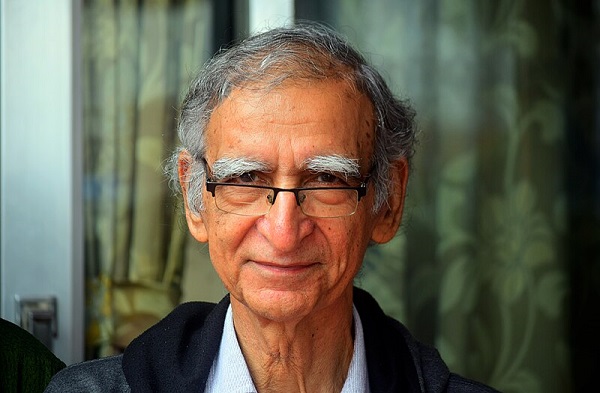Ram Puniyani
(Asian independent) The economic plight of minorities, particularly Muslims has been a very disturbing factor for all those who would like the society to strive for equality and justice. If we see the origin of Muslim community in India apart from the spread of Islam through Arab traders from 7th Century AD in Malabar Coast, the majority conversions have been mainly from the victims of caste oppression who were also economically deprived sections of society. During what is called the Mughal period, the Muslim King ruled from Delhi-Agra. During this the structure of society where landlords were Hindus in great numbers the economic plight of large sections of Muslims remained similar to poor Hindus.
After the 1857 uprising the backlash from the British was directed more against Muslims as Bahadur Shah Zafar was the one who was leader of this rebellion. The Muslim community had to face the bigger brunt of the British wrath. Post Independence the biases and myths against Muslims were highlighted and gradually they became major targets of the communal forces. As other communities were coming forward and lifting themselves through education and jobs, Muslims lagged behind due to multiple reasons, including the prevalent propaganda against them and the inheritance of their economic backwardness.
Our Constitution recognized the social and economic backwardness of dalits and Adivasis giving them the reservation which held the communities in some way. While at National level of OBC’s got 27% reservations in 1990, some states on their own had brought this earlier also. By and large these OBC reservations were strongly opposed by Organizations like “Youth for Equality”.
Even the reservations for Dalits other sections started getting opposed at large level like the anti Dalit and anti caste violence of 1980s and then in mid 1985 in Gujarat. Meanwhile as the Constitution did not recognize the reservations on the basis of religion, the minorities kept languishing in economic backwardness. Some states did try to incorporate Muslims in OBC quota but any move to uplift this community through quotas was strictly opposed by the Hindu Nationalist forces. The economic status for this community was a terrible mix of insecurity due to violence and economic deprivations due to lack of jobs and ghettoization, which was the direct outcome of violence. Every time some talk of reservation for Muslims came up it was strongly countered by the Hindutva politics and they cried hoarse about ‘appeasement of Muslims’. This also put some brakes on the intentions of the state to undertake the implementation of recommendations of the committees.
One recalls that after the Sachar Committee came out with the report in 2006, Dr. Manmohan Singh, the then Prime Minister of the country, stated its intention to undertake the reforms to improve the lot of this hapless community. “The component plans for Scheduled Castes and Scheduled Tribes will need to be revitalized. We will have to devise innovative plans to ensure that minorities, particularly the Muslim minority, are empowered to share equitably in the fruits of development. They must have the first claim on resources. The Centre has a myriad other responsibilities whose demands will have to be fitted within the over-all resource availability.”
State did try to understand the economic plight of Muslims through the Gopal Singh Committee, Ranganath Mishra Commission and finally through Sachar Committee. Most of these reports pointed out that the economic condition of Muslims is pathetic and has worsened over a period of last many decades.
This was propagated by BJP company as “This is what the Congress manifesto says,” he (Narendra Modi) claimed, “They will take stock of the gold that (our) mothers and sisters have, they will count and assess it, and then they will distribute that wealth, and they will give it to those people that Dr Manmohan Singh’s government had said – that Muslims have the first right to the nation’s wealth.”
It is in this light that one welcomes a new report from US-India Policy Institute and Centre for Development Policy and Practice, ‘Rethinking Affirmative Action for Muslims in Contemporary India’. The report has been prepared by Hilal Ahmad, Mohammad Sanjeer Alam and Nazeema Parveen. This report takes an approach away from the quota for Muslims. They recognize that Muslim community has different economic layers. While few of them are prosperous who don’t have to be considered for reservations. For the majority of sections of Muslims they suggest a religion neutral approach, focusing more on caste. Here caste-occupation is what should be looked at.
Already an increase in the ceiling is being campaigned by many to increase. With that apart from other things more Muslims categories can also be accommodated in OBC and dalit quotas. The report uses CSDS-Lokniti data. The authors of the report also consider the perceptions of Muslim communities. As reservations for Muslim is like a ‘red rag to the bull’ for the BJP and its ilk, the report talks more of accommodating these sections related to occupation based OBC. The Pasmanda Muslims, (Low caste ones’) the most deprived among Muslims, do fall in the category of Dalits. Many a Christian communities also fall in this category, which also need state support for a decent livelihood.
The report also considers the changing nature of the state and calls it ‘Charitable state’ which uses the word Labharthi for those who benefit from the state schemes. As per Hilal Ahmad, one of the authors of the report as far as state is concerned there is a shift from “…’group centric approach’ to ‘space centric’ welfarism.
They recommend a rational, secular sub categorisation of OBCs. Existing schemes and programs need to be jacked up. Affirmative action is the need of the hour. Here given all other qualifications-experience being equal; preference is given to the marginalized (Caste, Gender) for the selection for a job. There are many artisans in these communities; up-scaling their technology should help them.
The report is comprehensive and keeps the limitations of the present situation where the ruling politics treats minorities close to second class citizens. The million rupee question is, will the current dispensation following sectarian nationalism implement such a report with sincerity, overcoming their political biases’?








